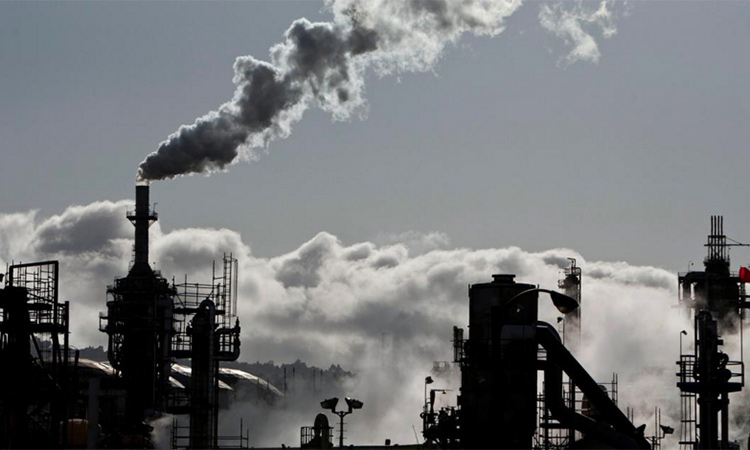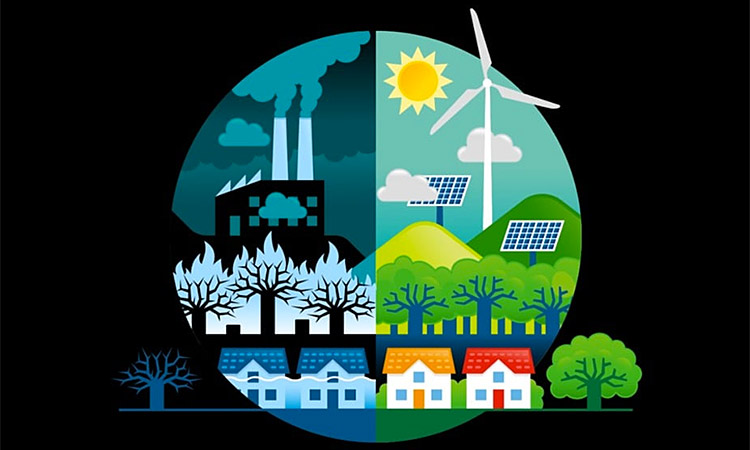Post-2030 Indian emissions may rebound, says IMF

Illustrative image.
The paper advocates for more policy intervention, which, however, comes with trade-offs, the Mongabay-India report notes. The report adds that India’s Nationally Determined Contributions (NDC) target is to reduce the emissions intensity of its GDP by 45% by 2030 from the 2005 level. In estimating policy impact, the paper considers five major emitting sectors – power, agriculture, manufacturing, transportation and residential – and the policy interventions to reduce emissions in these sectors. It also analyses existing policies to promote manufacturing and use of renewable energy.
The abstract of the IMF paper states that climate change poses challenging policy trade-offs for India. The country faces the challenge of raising living standards for a population of 1.4 billion while at the same time needing to be a critical contributor to reducing global GHG emissions. The government has implemented numerous policies to promote the manufacturing and use of renewable energy and shift away from coal, but much still needs to be done to reach India’s 2070 net zero goal. Reducing GHG emissions will almost certainly have a negative impact on growth in the short run and have important distributional consequences for individuals and communities who today rely on coal. But with the right policies, these costs – which are non-negligible but dwarfed by the cost of climate change over the next decade if no action is taken—can be significantly curtailed. This paper provides an in-depth review of the current climate policy landscape in India and models emissions trajectories under different policy options to reduce GHG emissions.
The Mongabay-India report points out that India, the third-largest global emitter of greenhouse gases (GHG), has the lowest per capita emission levels among G20 nations. Because India’s modern economic development began later than that of advanced economies, its contribution to the historical cumulative GHG emissions stands is small, at around 3%. In the coming two decades, India aims for ambitious growth, which could shift it from the current lower-middle-income status to a higher-middle-income status, according to the IMF report. With this anticipated increase in average incomes, the electricity demand is also expected to surge, driven by the needs of both businesses and households for amenities like air conditioners and refrigerators.
The IMF report adds that among the key high-emitting sectors in India, the electricity sector takes the lead, according to the report, constituting almost 40% of total emissions because of the heavy dependence on coal for electricity generation. Coal contributes over 70% to the electricity output. The industrial sector, including broad sub-sectors such as metals, minerals, machines, rubber and plastics, accounts for around 22% of total GHG emissions in India. The sector is less efficient than equivalent sectors in other countries, says the report. Agriculture contributes 14% to total GHG emissions, with emissions stemming from livestock’s enteric fermentation, rice cultivation (methane) and manure and residue burning (nitrous oxide). Despite a decline in cattle population since 2014, the sector remains a major source of methane emissions, constituting about 74% of the country’s total, significantly impacting temperatures. The agriculture sector also accounts for 20-25% of electricity consumed in the country, predominantly for irrigation, despite only 40% of arable land being irrigated.
India’s transport sector, predominantly reliant on oil, contributes approximately 9% to the nation’s GHG emissions, with road transport singularly responsible for 90% of sectoral emissions. The prevalence of smaller vehicles, mainly two- and three-wheelers, helps the country lower the sector’s emissions intensities. Petrol or diesel fuels about 97% of road transport, jet fuel powers air transport entirely and electricity predominantly fuels rail transport. Despite a rise in the absolute use of electricity as a fuel source, its share of overall final transport fuel consumption has declined in recent years due to the sharp increase in petrol and diesel consumption, as highlighted in the IMF paper. The paper concludes that while climate change poses challenging policy trade-offs for India, a path towards greener, stronger, and inclusive growth is possible.







